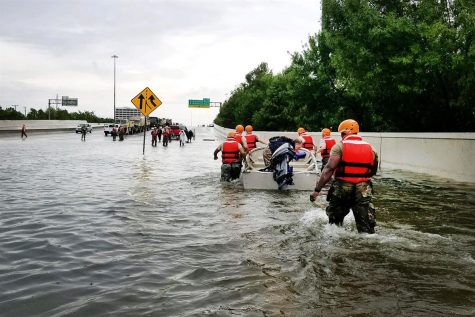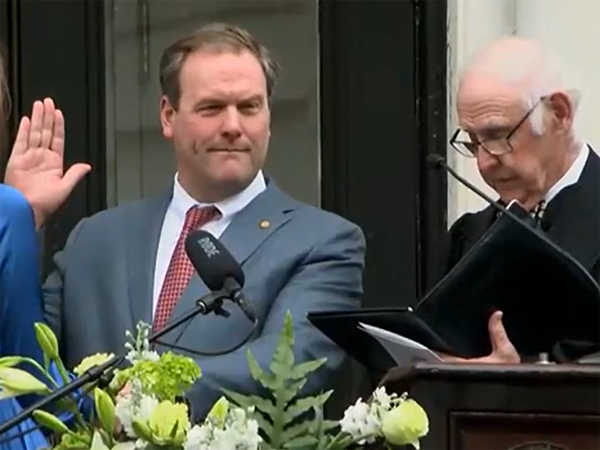Hurricane Harvey Devastates Houston and Surrounding Coastal Texas

What Happened
Hurricane Harvey made devastating landfall over the eastern coast of Texas at 9:45 pm on Friday, August 25th. It became a Category 4 hurricane over the Gulf of Mexico leading up to landfall, and had sustained winds of 130 miles per hour, making it the most powerful storm to hit the United States in over a decade. Torrential and catastrophic downpour affected a large portion of Texas, from Corpus Christi to Houston on the coast, and even caused flooding inland in the cities of San Antonio and Austin.

Experts are predicting that the storm could dump north of 55 inches of rain on some parts of coastal Texas, andat the time this article was written, the rain had already reached 51.8 inches in Cedar Bayou, an area east of downtown Houston. This breaks the record for most rain to fall due to a single storm in the continental US, and by the time the storm is over, it will have topped the 52 inches seen in Hawaii during a hurricane in 1950. In comparison, South Carolina’s most recent mass flood in October of 2015, which then Governor Nikki Haley called a “thousand year flood,” only resulted in up to 26 inches of rain, and still caused millions of dollars in damage and several deaths. This level of flooding, along with up to 5-7 days of sustained strong rain and wind over the Houston area as well as the Louisiana Gulf coast caused by now Tropical Storm Harvey, will result in destruction at the same level of Hurricane Katrina in 2005, which decimated the coastal city of New Orleans.
The largest city in Texas and the fourth largest in the nation, Houston, in recent years has become prone to flooding due to rising sea levels and mass development. It also has a number of bayous and dams that prevent massive reservoirs from flooding the city, complicating as well as intensifying the flooding in and around the city. These factors, as well as the lack of an evacuation order for this major city, have led to tens of thousands of residents becoming stranded in their homes, with photos showing waist-level or higher water in some areas. In addition, all major highways and roadways leading out of Houston are underwater, making it impossible for those stranded to evacuate, forcing them to wait for help. Texas officials are asking for any civilian with a boat to aid in the rescue effort, showing the degree of severity in this situation.
On Monday, Federal Emergency Management Agency (FEMA) Director Brock Long said that approximately 30,000 people will be forced out of their homes, and approximately 450,000 people will file for Federal Assistance as a result of Harvey. At the time that this article was written, 30 people had been confirmed dead as a result of the storm. As of 1 pm on Monday, Texas Governor Greg Abbott mobilized the entirety of Texas’ National Guard (roughly 12,000 troops), and President Trump has signed a federal declaration of disaster to allow for federal aid to take place with the rescue and cleanup. Trump also visited southeast Texas, near the area of direct landfall, to assess the damage and, subsequently traveled to Austin for a meeting with directors of the rescue and recovery effort.

Images being reported by the news media as well as on social media have shown the vast damage, and depict the severity of the flooding. They have also prompted many to donate to the rescue effort, with donations totaling in the tens of millions from corporations as well as individuals.
At the time that this article was written, the storm was expected to fizzle into a tropical depression and head inland by Wednesday night. However, the level of flood and destruction, paired with the risk that floodwater could take days to fully recede, means that rescue will continue on for days, and recovery will not officially start until next week.
How You Can Help
Mass flooding and torrential downpour are natural disasters that most residents of coastal South Carolina can understand the severity of, as well as sympathize with. Individuals all across the country can aid with the rescue operations in Texas, mostly by way of donating to different charities. The public is strongly advised to do research on the charity to which you plan on donating money, as there are unfortunately scam artists that take advantage of disaster situations such as these. However, these organizations are on the ground in Texas helping those in need, and have made it very simple for anyone to donate.
From the New York Times:
Donations to the Red Cross for those affected by Harvey can be made online, or text HARVEY to 90999.
Donations to the Salvation Army can be made online.
Catholic Charities is accepting donations online, or text CCUSADISASTER to 71777 to donate.












